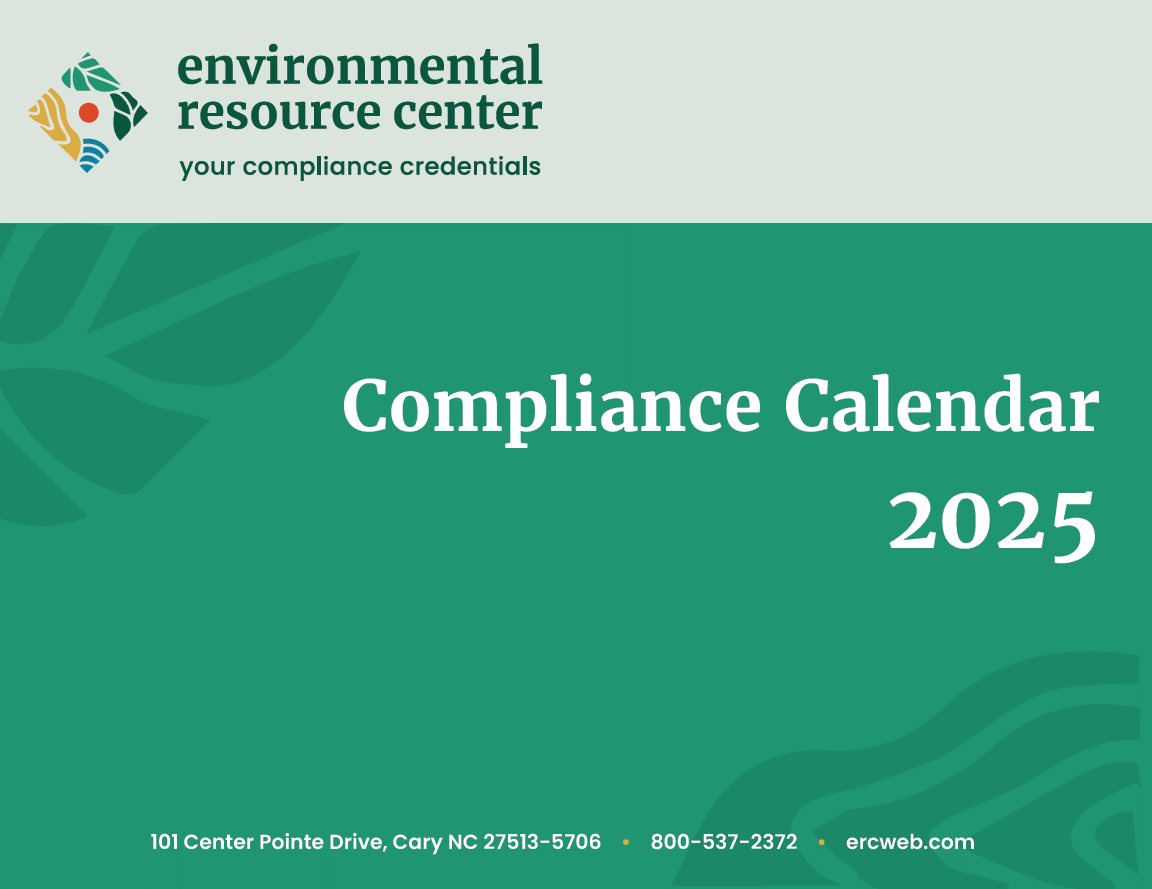 The U.S. Department of Transportation’s Pipeline and Hazardous Materials Safety Administration is providing notice that Class I railroads will receive a one-year extension of the timeframe to comply with the requirements included in the June 24, 2025, final rule for Real-Time Train Consist Information. The Pipeline and Hazardous Materials Safety Administration (PHMSA) and the Federal Railroad Administration (FRA) have been notified that Class I railroads anticipate significant challenges in their efforts to comply with the requirements and timelines of the HM-263 “Hazardous Materials: Real-Time Train Consist Information” final rule.
The U.S. Department of Transportation’s Pipeline and Hazardous Materials Safety Administration is providing notice that Class I railroads will receive a one-year extension of the timeframe to comply with the requirements included in the June 24, 2025, final rule for Real-Time Train Consist Information. The Pipeline and Hazardous Materials Safety Administration (PHMSA) and the Federal Railroad Administration (FRA) have been notified that Class I railroads anticipate significant challenges in their efforts to comply with the requirements and timelines of the HM-263 “Hazardous Materials: Real-Time Train Consist Information” final rule.This final rule requires railroads that carry hazardous materials to generate, maintain, and provide, in electronic form, certain information regarding hazardous materials in rail transportation to first responders, emergency response officials, and law enforcement personnel to enhance emergency response and investigative efforts. The final rule requires compliance by June 24, 2025, for Class I railroads.
The challenges described by Class I railroads include employee training, IT system updates, and installation of physical infrastructure along certain areas of their rail network to facilitate electronic real-time train consist information updates. In consideration of these issues, once a Class I railroad provides PHMSA notice that their individual railroad is utilizing this enforcement discretion in its operations, PHMSA and FRA will take no enforcement action against those particular Class I railroads related to the requirements adopted in the HM-263 final rule until June 24, 2026.
PHMSA strongly encourages Class I railroads to achieve full compliance with the final rule’s requirements before June 24, 2026, especially for those areas of the rail networks where earlier compliance is more feasible. Requests for further extensions are strongly discouraged and may not be granted.
Class I railroads that require the utilization of this enforcement discretion: (1) must provide PHMSA notice that their individual railroad is utilizing this enforcement discretion in its operations, and (2) the Class I railroads that are unable to comply with the requirements of the HM-263 final rule should maintain documentation explaining what specific requirements are not being met, the reasons why the specific requirements are not being met, and what alternative measures are being taken to ensure safety.
This Notice of Enforcement Discretion expires June 24, 2026.
 The EPA will notify the U.S. District Court for the Eastern District of Pennsylvania of its intent to finalize a rule revising outdated water quality standards for 38 miles of the Delaware River between Philadelphia and Wilmington. EPA’s forthcoming final rule will prioritize clean water to support aquatic life and benefit those living, working and recreating in Delaware, New Jersey and Pennsylvania.
The EPA will notify the U.S. District Court for the Eastern District of Pennsylvania of its intent to finalize a rule revising outdated water quality standards for 38 miles of the Delaware River between Philadelphia and Wilmington. EPA’s forthcoming final rule will prioritize clean water to support aquatic life and benefit those living, working and recreating in Delaware, New Jersey and Pennsylvania.“EPA’s rule, when finalized, will support improved conditions for aquatic life in the Delaware River Estuary, and I am proud of the Delaware River Basin Commission’s (DRBC) sound scientific work in the process,” said Kristen Bowman Kavanagh, P.E., DRBC’s Executive Director. “The DRBC will continue to provide resources and expertise to our member states, EPA, and stakeholders to implement the rule.”
Water quality standards (WQS) describe the desired condition of a water body and the means by which that condition will be protected or achieved. Water bodies can be used for purposes such as fishing, recreation (e.g., swimming and boating) and scenic enjoyment. This action better aligns water quality standards in this urbanized portion of the Delaware river with standards that already exist upstream and downstream to better support cohesive water quality planning.
This section of the Delaware River between Philadelphia and Wilmington is where several commercially and recreationally important fish species live and spawn. Making sure that all these oxygen-sensitive fish have adequate water quality that supports reproduction and growth will protect and increase their populations, which will bolster commercial and recreational fishing, job creation, and revenue in the ecotourism sector.
EPA is continuing to review and consider all the comments as the agency drafts the final rule. EPA will provide responses to all public comments when the final rule is issued. EPA intends to comply with all applicable and relevant Executive Orders when issuing this rule.
On-Site Training
Environmental Resource Center’s on-site and custom training is designed to meet the unique needs of your organization. Get the training you need tailored to your site’s operations. We’ll deliver the training according to your schedule, at your site or online!
 The International Air Transport Association (IATA) announced that the 37th IATA Ground Handling Conference (IGHC) will focus on the need to modernize operations, invest in workforce development, and strengthen coordination and collaboration to improve performance.
The International Air Transport Association (IATA) announced that the 37th IATA Ground Handling Conference (IGHC) will focus on the need to modernize operations, invest in workforce development, and strengthen coordination and collaboration to improve performance.“Ground handling is critical for the safety, efficiency and resilience of the entire aviation industry. The key word we will focus on at this year’s IGHC is “elevate”. We’ll be looking for ways to drive better performance in the ground handling sector. That means modernizing operations, investing in the workforce, and strengthening coordination and collaboration so that ground handling can support growth even more efficiently,” said Willie Walsh, IATA’s Director General.
IGHC is taking place in Nairobi, Kenya, from 13 to 15 May 2025, hosted by Kenya Airways. It is the first time that the conference will be hosted on the African continent.
Speakers and Sessions
The President of the Republic of Kenya, His Excellency Dr. William Samoei Ruto, IATA’s Director General, Willie Walsh, and the Chief Executive Officer of Kenya Airways, Allan Kilavuka will be among the keynote speakers at the event.
The conference will feature plenary sessions, specialized tracks and workshops, addressing:
- Ground Operations: The reliability of Ground Support Equipment (GSE), the transition to hydrogen-powered GSE, the benefits of harmonized training, and key safety focus areas for ground personnel.
- Baggage Operations: For the first time, a dedicated session will cover real-time baggage tracking, the transition to modern messaging standards, and the shift to electronic bag tags.
- Collaboration and Innovation: Discussions will explore airport–ground handler collaboration, provide insights into privatization, and examine upcoming ground handling regulations.
Spotlight on Africa
In recognition of the critical role that ground operations play across Africa’s growing aviation sector, H.E. Dr. William Samoei Ruto, President of the Republic of Kenya will attend the conference and has extended invitations to regulators and aviation authorities from across the continent.
“Aviation opens a world of economic and social development opportunities, and aviation’s greatest potential is to make a real difference to the prosperity of people in Africa. Welcoming and supporting the IGHC in Kenya is an example of the importance that Kenya places on the aviation sector and the expectations that we have for it as a sector leading development in Kenya and across the continent,” said H.E. Dr. William Samoei Ruto, President of the Republic of Kenya.
Hosting IGHC 2025 in Nairobi underscores IATA’s commitment to supporting aviation growth in Africa, in line with its broader efforts under the Focus Africa initiative.
“As Africa’s aviation leader, Kenya Airways is honored to pioneer this landmark event. Hosting IGHC aligns with our mission to drive innovation, foster partnerships, and showcase Africa’s readiness to shape the future of global air travel. Hosting IGHC 2025 in Kenya reaffirms our commitment to advancing the industry—both domestically and continentally—to unlock prosperity and connectivity,” said Allan Kilavuka, CEO of Kenya Airways.
 The EPA announced a newly scheduled public hearing for an updated draft of the general permit for all small and regulated "Municipal Separate Storm Sewer Systems" (MS4s) located in Mass. The draft permit was initially place on public notice last November. This affects more than 260 municipalities in the Commonwealth, all of which were already covered under the previous Massachusetts Small MS4 General Permit that EPA issued in 2016.
The EPA announced a newly scheduled public hearing for an updated draft of the general permit for all small and regulated "Municipal Separate Storm Sewer Systems" (MS4s) located in Mass. The draft permit was initially place on public notice last November. This affects more than 260 municipalities in the Commonwealth, all of which were already covered under the previous Massachusetts Small MS4 General Permit that EPA issued in 2016.The updated draft of this existing general permit continues to require MS4s to develop, implement, and enforce a "Stormwater Management Program" designed to control the discharge of pollutants from stormwater to water bodies to the maximum extent practicable, protect water quality, and satisfy appropriate requirements of the federal Clean Water Act.
EPA encourages and will accept written comments from the public on the Draft Permit during the notice period which ends May 21, 2025. The Draft Permit and associated documents are available at https://www.epa.gov/npdes-permits/massachusetts-small-ms4-general-permit.
In addition, EPA will hold a virtual hearing for the Draft Permit on May 7, 2025, at 7pm. The registration for the virtual public hearing can be found at https://www.epa.gov/npdes-permits/massachusetts-small-ms4-general-permit#2024draftmams4gp.
Rainwater that falls on hard surfaces such as parking lots, roadways, and roofs can pick up pollutants that are then carried into local waterways via the storm drains, pipes, and ditches that make up municipal storm sewer systems. Stormwater runoff flows over these hard surfaces directly into storm drains so there is no opportunity for soil and plants to absorb the rainwater and filter out pollutants.
Pollutants lead to water quality issues (such as growth of harmful algae and bacteria and accumulation of trash, oil and grease, and metals) that can make waters unsafe for swimming and boating and can harm aquatic life.
The requirements in the Draft Permit largely follow or build on the requirements of the currently effective 2016 MA MS4 Permit. It also includes new requirements to expand public engagement, develop street design standards that feature nature-based solutions, develop an integrated system to track MS4 assets and maintenance, begin implementing plans developed under the 2016 Permit to install controls to treat stormwater runoff on permittee-owned property, and begin upgrading catch basins to better control solids in stormwater runoff.
The Draft Permit requires municipal permittees that discharge to nutrient-impaired waterbodies to begin installing stormwater treatment based on the Source Identification Reports developed under the 2016 Permit. Finally, the Draft Permit proposes a new requirement for permittees discharging to waterbodies in the Mystic River watershed to reduce the phosphorus load in stormwater discharges from hard surfaces by 20% within six years.
News Links
Trivia Question of the Week



